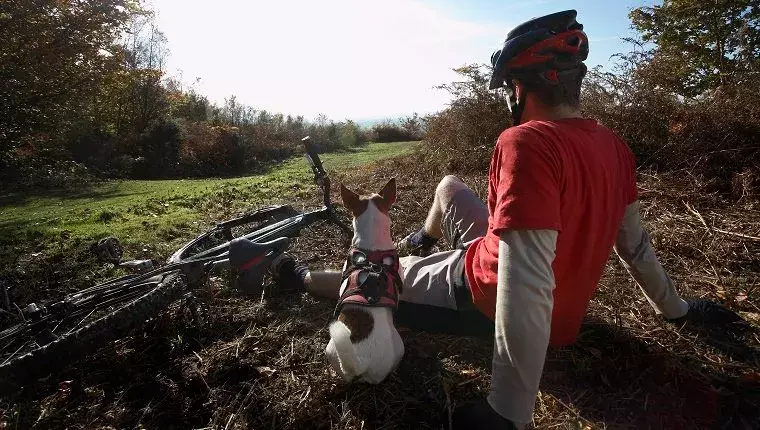Taking a dog for a walk is often seen as a mundane task, but what if we could transform this necessity into an exhilarating adventure? Cycling with your furry friend is not only a wonderful way to spend quality time outdoors, but it also provides an excellent outlet for your dog’s energy. However, before you leap into this exciting experience, safety should be your utmost priority. Ensuring that both you and your pup are well-prepared can lead to an enjoyable and safe biking adventure.
Assessing Your Dog’s Readiness
Before you even think about saddling up and hitting the open road, it’s essential to evaluate whether your canine companion is ready for this level of activity. Some dogs, especially certain breeds with breathing issues—like Bulldogs or Pugs—are not built for high-energy excursions. Their anatomy simply doesn’t allow for the kind of strenuous exercise that cycling can involve. Additionally, take note of your dog’s size and fitness level. If your pup is overweight or has short legs, they may struggle to keep up with you on your bike.
It’s a good rule of thumb to schedule a vet visit before embarking on biking adventures. A thorough health check can shed light on whether your dog is physically fit for running alongside a bike. This step is a non-negotiable if you want to ensure the health and wellness of your furry friend.
Equipping Yourself and Your Dog
Proper equipment can make a world of difference when biking with your dog. You might believe that a simple leash will suffice, but the right gear can dramatically enhance safety for both you and your dog. A non-tangling leash designed to attach to your bike’s rear axle or seat is preferred; attaching it to the handlebars is a risky move that could lead to serious accidents.
Similarly, using a well-fitting harness is crucial. Unlike collars, which can lead to neck injuries while the dog pulls, a harness distributes pressure across their body, making it safer for your pup. Visibility is another critical safety factor. Equip your bike with bright reflectors and lights, and consider a reflective vest or light-up collar for your dog; this will help both of you stand out, especially during dawn or dusk rides.
Finally, never underestimate the importance of a doggy first-aid kit and extra hydration. Drink breaks for both you and your dog are essential, particularly during warm days, as canine hydration is vital to maintaining their energy levels.
Choosing the Right Terrain and Route
Not all paths are suitable for cycling with a dog. Evaluate your route in advance to ensure that it is safe. It’s crucial to steer clear of areas with hot pavement or risky obstacles like broken glass and loose gravel. If the ground is too hot, your dog’s paws could suffer burns, and encountering sharp objects can lead to injuries.
Selecting a suitable terrain also comes down to understanding your dog’s physical capabilities. If your dog is accustomed to walking on grass, they might not find sudden changes in environment easy to adapt to. Therefore, stick to smooth, pet-friendly paths wherever possible.
Training and Adjusting Your Ride
Once you have the appropriate gear and safety measures in place, it’s time for the most important step: training. Before you mount your bike, walk alongside it with your dog to get them accustomed to the idea. Practice essential commands like “stop” and “slow,” reinforcing your dog’s behavior and ensuring they understand what you expect during the ride.
On your first few rides, it’s wise to go slowly. Your dog may not be used to this new form of exertion, so take the time to observe their body language. Look out for signs of fatigue such as heavy panting and drooling. Frequent breaks will allow your dog to catch their breath, rehydrate, and partake in some essential potty stops.
Alternatives for Less-Active Dogs
If you find that your current dog isn’t quite suited to the rigors of cycling, please don’t despair. There are other creative ways to include your pet in outdoor activities. For smaller dogs or those that prefer not to jog alongside you, consider utilizing a bike basket or a sturdy trailer. These options allow your pooch to enjoy the scenery while remaining secure.
For a basket, ensure that your dog is comfortable and isn’t shifting too much; this will keep the balance of your bike intact. Practice riding with an object of similar weight before loading your dog into the basket to understand how it will affect your ride.
Biking with your dog can be a thrilling and bonding experience, as long as you ensure that the adventure remains safe and enjoyable for both of you. Keep safety at the forefront, and you’ll be able to forge wonderful new memories alongside your furry friend, all while enjoying the great outdoors together.

